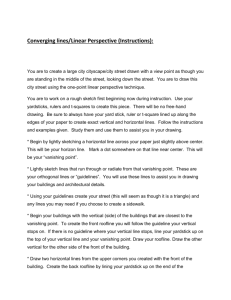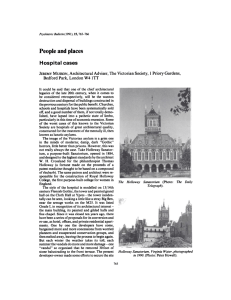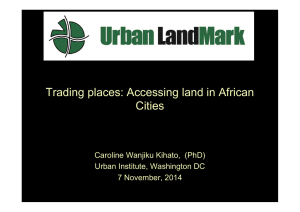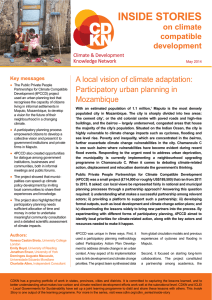Team X and Modernism in Maputo
advertisement
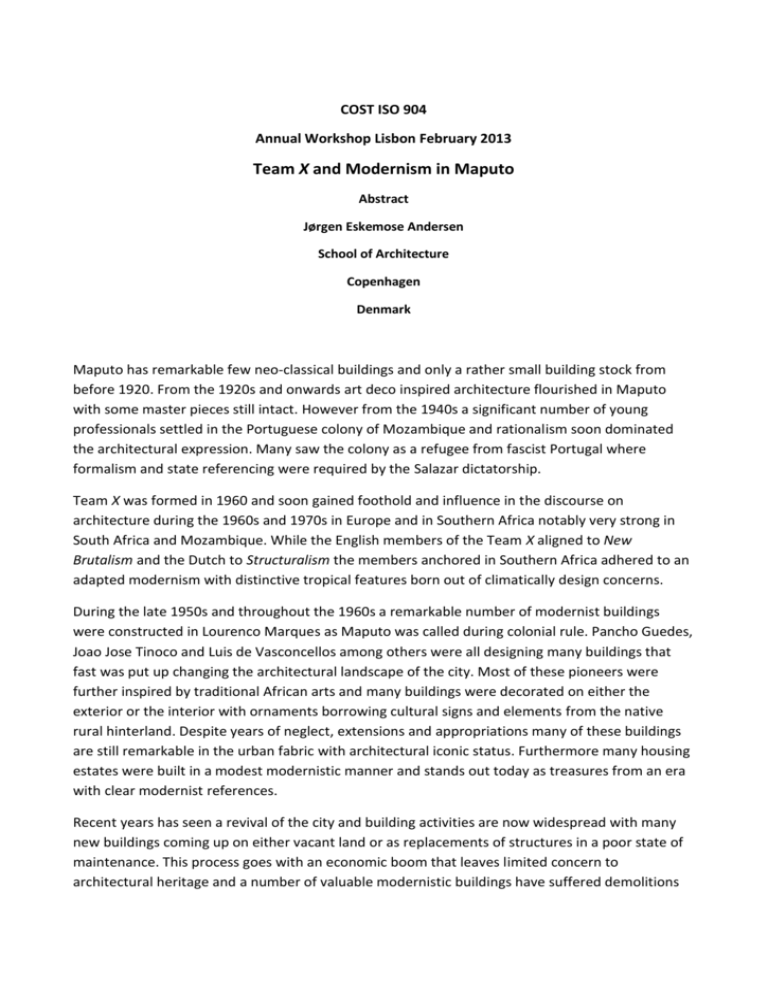
COST ISO 904 Annual Workshop Lisbon February 2013 Team X and Modernism in Maputo Abstract Jørgen Eskemose Andersen School of Architecture Copenhagen Denmark Maputo has remarkable few neo-classical buildings and only a rather small building stock from before 1920. From the 1920s and onwards art deco inspired architecture flourished in Maputo with some master pieces still intact. However from the 1940s a significant number of young professionals settled in the Portuguese colony of Mozambique and rationalism soon dominated the architectural expression. Many saw the colony as a refugee from fascist Portugal where formalism and state referencing were required by the Salazar dictatorship. Team X was formed in 1960 and soon gained foothold and influence in the discourse on architecture during the 1960s and 1970s in Europe and in Southern Africa notably very strong in South Africa and Mozambique. While the English members of the Team X aligned to New Brutalism and the Dutch to Structuralism the members anchored in Southern Africa adhered to an adapted modernism with distinctive tropical features born out of climatically design concerns. During the late 1950s and throughout the 1960s a remarkable number of modernist buildings were constructed in Lourenco Marques as Maputo was called during colonial rule. Pancho Guedes, Joao Jose Tinoco and Luis de Vasconcellos among others were all designing many buildings that fast was put up changing the architectural landscape of the city. Most of these pioneers were further inspired by traditional African arts and many buildings were decorated on either the exterior or the interior with ornaments borrowing cultural signs and elements from the native rural hinterland. Despite years of neglect, extensions and appropriations many of these buildings are still remarkable in the urban fabric with architectural iconic status. Furthermore many housing estates were built in a modest modernistic manner and stands out today as treasures from an era with clear modernist references. Recent years has seen a revival of the city and building activities are now widespread with many new buildings coming up on either vacant land or as replacements of structures in a poor state of maintenance. This process goes with an economic boom that leaves limited concern to architectural heritage and a number of valuable modernistic buildings have suffered demolitions e.g. the international airport now being replaced by a Chinese designed and built new airport. Most of these new buildings are put up in an “international style” with limited, if any, reference to the modernism shaping Maputo. The paper investigates the influence by the Team X and how this is architectural manifested in present day Maputo. The paper thus necessarily slots into a debate on the ostensibly unregulated capitalism which, in an unscrupulous manner is taking the lead in the building sector, introducing different discourses in a pace and manner, previously unheard of. New pieces of architecture by local Mozambican architects are analyzed and the issue of integrated urban development vs. suburban developments with gated communities is studied. Finally the paper discusses the development of the peri-urban areas where the majority of the urban population is living in the so-called informal settlements. What kind of architectural manifestations are at stake in these areas and why have only few architects paid attention to these enormous areas? Key words: Modernism, pre- and post-colonial architecture, investors and developers, informal settlements and heritage preservation.








